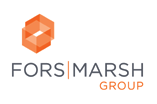Studies to Enhance FDA Communications Addressing Biosimilar Drug Products: Focus Groups and INterviews with Healthcare Professionals
Data to Support Drug Product Communications
FDA Biosimilar Moderator Focus Group Guide
Studies to Enhance FDA Communications Addressing Biosimilar Drug Products: Focus Groups and INterviews with Healthcare Professionals
OMB: 0910-0695

Biosimilar Products—Healthcare Professional Focus Groups
Semi-structured Moderator’s Guide

23
April 2014

 Summary
Page
Summary
Page
Research Objective: Conduct focus groups with 5–8 healthcare professionals (HCPs) who currently prescribe or dispense biologics or have in the recent past to obtain insight into and feedback about healthcare professionals’ experiences and opinions related to communicating with patients about these products. The findings from these groups will be used to help inform CDER’s communications about specific biological products demonstrated to be "biosimilar" to or "interchangeable" with an FDA-approved biologic product. FDA has only approved a few biosimilars to date; therefore, HCP experience with and opinions about these specific biologic products is expected to be extremely limited. However, prescribers with biologic experience are the most likely to prescribe or dispense biosimilar and interchangeable biologics in the future.
Discussion Guide Format: The discussion guide is developed for a 90-minute session.
SESSION OVERVIEW: Total time 90 minutes |
SECTION 1: Introduction and Warm-Up (5 min.) The moderator will explain the purpose of the research, present the ground rules, allow the participants to ask any questions, and get to know the participants. |
SECTION 2: Knowledge of and Experience with Biologics and Biosimilars (20 min.) The purpose of this section is to establish health care professionals’ baseline understanding of, experience with, and attitudes about biologics, including biosimilars. This section will allow the research team to a) confirm the findings of knowledge, attitudes, and behaviors with previous research on biosimilars and b) gain a deeper understanding of healthcare professionals’ experience with biologics. |
SECTION 3: Communication with Patients about Biologics and Biosimilars/Interchangeables (45 min.) The purpose of this section is to better understand how healthcare professionals communicate with their patients about biologics and biosimilars, and what they feel they need to enhance these communications. This section will allow the research team to answer many of the research questions for this phase of research. |
SECTION 4: Educational Materials (15 min.) The purpose of this section is to gather reactions to the educational materials FDA developed for healthcare professionals related to biologics. Each group will be assigned one educational material to provide feedback on. |
SECTION 5: Conclusion (5 min.) The moderator wraps up the discussion and ensures that all questions have been answered and all comments have been heard. The moderator will employ a false close in which observers can communicate with FMG support if there are specific topics for the moderator to follow up on with participants. |

Section 1: Introduction and Warm-Up (5 min.)
Thank you for taking the time to talk with me. My name is [Moderator name], and I’ll be leading our discussion today. I am part of an independent research company, Fors Marsh Group. We are conducting a study sponsored by the Food and Drug Administration. As you may know, this type of discussion is called a focus group, which is a type of research used to gather opinions on a specific topic. That is why I’m here; to talk to you and understand what you think. Specifically, I am going to be asking about your thoughts and experiences related to biological products in general, and about specific biologic products called biosimilars and interchangeables. The information you share with us will help FDA better understand prescribers/dispensers thoughts and experiences which will help inform their communications about these products. This discussion will last about 90 minutes.
There are a few things I’d like to go over to help make our discussion more productive:
I have a discussion guide in front of me that includes all the points of discussion I need to raise, and helps me keep the discussion on track. It is important that we cover all the topics. Therefore, I may have to break off the conversation in order to move on to another area in the guide.
We are audio recording this session for use in preparing a report with our findings. Because we are recording this meeting, I ask that you speak loudly and clearly.
There are a few people online with us in the discussion today. You should be able to hear each other and me if you have your webcam on. You should also be able to see me, and I can see all of you, but you won’t see each other. Please speak one at a time and do not engage in side conversations during the discussion. I want to hear what everyone has to say today as well as when I go back to listen to the audio recording to write the report.
I want to hear from everyone, but not every person has to answer every question.
We want to hear a range of thoughts, feelings, and experiences, so please don’t hesitate to speak up if you have opinions different from what others in the group are saying—there are no wrong answers. We’d like to have everyone participate during the full 90 minutes, but understand if you ,may need to step away briefly.
We have a few more things to cover before we get started:
I know you all received and signed the consent forms. As a reminder, your contributions to our discussion will be private to the extent allowed by law, and your names will not appear in the summary report or any other information that’s provided to the FDA. Likewise, we will not share any of our discussion from today with others who are not actively working on this project.
Your participation is voluntary. Therefore, at any point in time you may leave the online meeting room. And you can choose not to answer any question you do not wish to answer.
Some people from my team as well as the FDA may be viewing remotely. They want to hear what you have to say about the topics we’ll discuss, so please do not feel constrained by their presence.
Does anyone have any questions before we begin?
Icebreaker
You all are healthcare professionals working in [Medical Specialty] First, I’d like us to take turns introducing ourselves. Just say your first name only, where you practice, and how many years you have been practicing.

Section 2: Knowledge of and Experience with Biologics and Biosimilars (20 min.)
All of you indicated to the recruiter that you have prescribed a biological product other than a vaccine in the past, is that correct? Which ones have you prescribed and for what conditions?
How many of you have heard of a specific type of biological product called a biosimilar? What do you know about biosimilar products? What have you heard abouth them?
How many of you have prescribed a biosimilar product and for what conditions? The 3 biosimilars currently on the market are Renflexis, Inflectra and Zarxio.
We’ll talk more about biosimilar products in a few minutes, but so everyone is on the same page, we’ll use the following definition of biological products.
[Moderator will display and read the following description. S/he will customize the examples to include conditions for the different healthcare professional specialties. For a list of medical conditions associated with biologics for each specialty, please see Appendix A.]
Biological products are a diverse category of products used to diagnose, prevent, treat, and cure diseases and medical conditions. They are generally large, complex molecules that may be produced through biotechnology in a living system, such as a microorganism, plant cell, or animal cells. FDA has approved many types of biological products for use in the US, including therapeutic proteins (such as filgrastim used to treat neutropenia) and monoclonal antibodies (such as adalimumab, used to treat rheumatoid arthritis, psoriatic arthritis, Crohn's disease, ulcerative colitis, chronic psoriasis and other conditions). During the rest of this focus group, I will refer to biological products as “biologics” for simplicity.
Before we move on, what did you think about that definition of biologics? What did you learn from it that you didn’t already know? Was there anything unclear or confusing about the definition? [Moderator will probe on any discrepancies between participants’ knowledge of biologics and the definition read out loud.]
Now I want to get a bit more into your thoughts about non-vaccine biologics.
Prescribers only: Why do you prescribe biologics instead of other kinds of medicines?
How do biologics compare with other products? [Non-biologic medicines]
(Moderator will probe on any of the following that don’t come up spontaneously: benefits, safety, side effects and other drawbacks, and patient adherence).
What do you think about the description of biologics being more “natural” than non-biologics?
Prescribers only: In general, what kind of treatment outcomes have you seen from biologics? How does that compare with outcomes from other medicines?
Prescribers only: What goes into your decision to prescribe biologics to patients versus other products or medicines?
In general, do you try other treatments first or try biologics first? Tell me more about that.
What might prevent you from prescribing biologics? [Moderator will probe on financial barriers or administrative hurdles as these were large themes in the previous research, as well as issues such as underlying medical conditions like chronic infections, and adverse drug reactions.]
What might be able to lessen or decrease these barriers?
Biosimilar Prescribers only: For those who have specifically prescribed biosimilar products, why do you prescribe biosimilars instead of other kinds of biologics? How do biosimilars compare with other biologics? With other kinds of medicines? (Moderator will probe on benefits; side effects and other drawbacks; safety; and patient adherence).
 Section
3: Communication with Patients about Biologics, and Biosimilars (45
min)
Section
3: Communication with Patients about Biologics, and Biosimilars (45
min)
Now I’d like to ask you some questions about your communications with patients about biologics. If you have prescribed biosimilars, please discuss your experience with those here as well. Just to make sure we’re all on the same page, a biosimilar is a biological product that is highly similar to and has no clinically meaningful differences from an existing FDA-approved reference product. An interchangeable product, in addition to being biosimilar, meets additional requirements based on further evaluation and testing of the product, including that it is expected to produce the same clinical result as the reference product in any given patient.
When was the last time each of you communicated with a patient about a biologic? [Moderator will probe on biosimilars, too.]
Tell me more about these conversations. [Moderator will spend time probing on their individual experiences, including any differences between reference biologics and biosimilars, if participants have experience with biosimilars.]
How do you typically go about talking to your patients about a biologic you are prescribing for them? What do you tell your patients?
What do you tell them about the indication, benefits, and expected treatment outcomes?
What do you tell them about your reason for prescribing the specific biologic you chose?
What do you tell them about how to use and store the product?
What do you tell them about possible side effects or other risks?
How do your patients typically react to this information?
What questions do they ask?
What are their reactions and what comments do they share? [ONLY IF NEEDED: for example, do they embrace the medication, express concern or decline it, ask for something else, etc.?]
Do they ever talk to you about ads they may have seen on television about the biologic you are prescribing and if so, what are they saying or asking? Do patients ever ask about biologics they may have seen advertised more generally, and if so, what are they saying or asking?
After taking a biologic, what feedback do your patients give you about their experiences with the biologic you prescribed? Moderator will probe on their individual experiences, including any differences between reference biologics and biosimilars, if participants have experience with biosimilars.
What do patients tell you about how their biologics are working for their condition or problem?
What questions do they ask? How do these compare with the questions they asked when you initially prescribed the biologic? [ONLY IF NEEDED: Do they have more specific questions, and if so, about what topics? Do they have no questions? Do they ask if they can take another drug?]
What do patients tell you about their intention to continue taking biologics?
What do you think are the three most important things you think patients should know about biologics generally?
Why do you think that?
What do you say when you provide this information to them?
Are there other things you try to communicate to patients about biologics? [Moderator: If needed and not mentioned spontaneously, moderator might probe on safety; similarities or differences between biologics and other medicines, costs, etc. from below]
What, if anything, do you feel is least important for patients to know about biologics?
Why is that information less important?
What kind of written information or resources do you provide to your patients about the specific biologic you have prescribed/dispensed? About biologics generally? [Resources would include web sites where they could read more, and if this is the case, what are they?]
From what sources do you obtain this information?
If a patient wants to know more about biologics, where do you point them?
How does the way you communicate about biologics differ depending on the conditions for which you are prescribing it? The patients to whom you are prescribing it?
How has the way you communicate about biologics changed over the course of your prescribing experience?
We’re going to switch gears now to talk specifically about biosimilar and interchangeable biologic products.
How much do you feel you know about biosimilars? About interchangeables? [Moderator will ask every participant or will get a show of hands and count them of some general terms such as not very much; a little; a moderate amount, quite a bit.]
[Moderator will ask these 2 questions and get responses from all participants before reading the defintions that follow.]
How comfortable are you talking with your patients about biosimilars and interchangeables? How confident are you that you could answer your patients’ questions about biosimilars and interchangeables? How confident are you that you could address any patient concerns about biosimilars and interchangeables? [Moderator will ask every participant or will get a show of hands and count them of some general terms before reading the defintions that follow. If there’s time, it would also be good to ask why they feel that way.]
To make sure we’re all on the same page going forward, a biosimilar is a biological product that is highly similar to and has no clinically meaningful differences from an existing FDA-approved reference product. An interchangeable product, in addition to being biosimilar, meets additional requirements based on further evaluation and testing of the product, including that it is expected to produce the same clinical result as the reference product in any given patient.
What questions, if any, do you have about biosimilars and interchangeables?
What, if any, information would YOU like to know about biosimilars and interchangeables? [Moderator will probe to ensure responses include those related to safety and efficacy of biosimilars and interchangeables.]
What information do you currently lack about these products?
Through what source(s) would you like to learn this information and why? Would the FDA be a source from which you would consider getting this information? Why or why not?
In what format would you prefer this information, for example, fact sheets, content on a web page that can be downloaded or printed?
What information do you think your patients will NEED about biosimilars and interchangeables? How much of this nformation would you want to communicate to them yourself?
What additional information do you think your patients might WANT about a biosimilar or interchangeable you were prescribing for them? What additional questions do you expect your patients to ask about them?
If they wanted to know more about biosimilars or interchangeables than what you were able to tell them, where would you point them?
How do you think communicating with patients about biosimilars and interchangeables might be different than communicating about other biologics you prescribe?
For biosimilar prescribers: What has been your experience communicating with patients about biosimilars vs. other biologics?
If a patient wanted to know more about biosimilars or interchangeables, where would you point them?
For biosimilar prescribers: Where do you point them?
What information, materials, resources, etc. would make you more comfortable or confident speaking with your patients about biosimilars and interchangeables? About answering patients’ questions about biosimilars and interchangeables? About addresing any patient concerns about biosimilars and interchangeables?

Section 4: Biosimilar and Interchangeable Educational Materials (15 min.)
Before we wrap up, we have some information about biosimilars and interchangeables that we’d like to get your reactions to, which I’m going to put up on the screen now for you to look at. Please take a few minutes to read this now and then I’ll ask you some questions about it. [Based on the pre-designated randomization, the moderator will show the designated material to the group by pulling it up on the screen. The moderator will allot a few minutes for the participants to read the material on their screens. Afterwards, the moderator will ask a series of questions.]
I’m going to get started on the discussion questions but will keep the information up on the screen for you to reference.
What are the main ideas that you took away from this information?
What are your thoughts about this information?
How did this information affect your understanding of biosimilars/interchangeables?
How easy was it for you to understand this information ?
What would make this information easier to understand?
What, if anything, is unclear or confusing about this information?
What would make it more clear or less confusing?
What questions do you have after reading it?
What got your attention about this information?
What would make this information better able to get your attention or make you more likely to read it?
What do you like about it?
What do you dislike about it?
What information is unnecessary?
How do you think this information would help prescribers/ pharmacists?
How would this information help you communicate with patients about biosimilars and interchangeables?
How, if at all, would this information influence your likelihood to prescribe biosimilar and/or interchangeable products? Why?
 Section
5: Conclusion (5 min.)
Section
5: Conclusion (5 min.)
Thank you very much for participating in this focus group. I appreciate you sharing your time and valuable feedback. Is there anything that you would like to share that you did not have a chance to share yet?
[The moderator will check with the research team for any remaining questions.] If you will excuse me for just a moment, I would like to check with the members of my team who have been listening to this discussion to see if they have any follow-up questions for you.
I believe we are all done here. Thank you so much for your time. You will receive your incentive through your All Global Circle account. If you don’t, please follow up with Lightspeed Health. If you have other questions about the research, use the contact information for our researchers on the consent form copy you were provided.
Appendix A: Illnesses and Conditions for which Biologics are Commonly Prescribed (taken from the Focus Group Report from 2015)
Illness/Condition |
Corresponding Medical Specialty |
Anemia |
Multiple specialties |
Autoimmune conditions (non-specific) |
Multiple specialties |
Cancer |
Oncology/Hematology |
Diabetes |
Endocrinology |
Hidradenitis suppurativa |
Dermatology |
Inflammatory bowel disease (e.g., Crohn’s Disease) |
Gastroenterology Oncology/Hematology |
Lupus |
Rheumatology |
Nephritis |
Nephrology |
Psoriasis |
Dermatology |
Renal rejection |
Nephrology |
Rheumatoid arthritis |
Rheumatology |

| File Type | application/vnd.openxmlformats-officedocument.wordprocessingml.document |
| File Title | Table of Contents |
| Author | Lola Evans |
| File Modified | 0000-00-00 |
| File Created | 2021-01-21 |
© 2025 OMB.report | Privacy Policy
